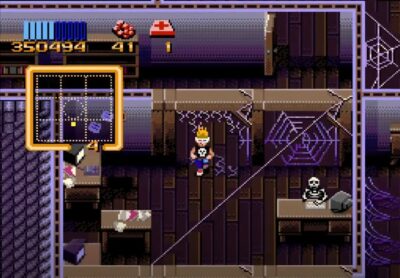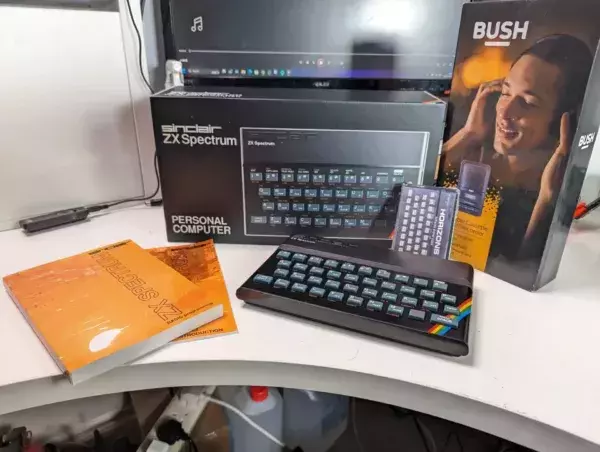
Just getting to grips with Final Fantasy XVI? Then check out our starter guide, with ten tips to get you started in the vast world of Valisthea.
Like many of the entries before it in its long-running history, Final Fantasy XVI is set in a new world, the medieval Europe-inspired fantasy realm of Valisthea. The fresh setting also offers new systems to engage with, not least its overhauled real-time action combat system, marking the series’ departure from turn-based, party-based and command-based mechanics.
As an instalment reinvented for modern audiences, old-school Final Fantasy fans might need time adapting to this new world, although in any case there’s plenty to unpack whether you’re a series veteran or newcomer. To help you get started, here’s ten things we’d recommend you do or pay attention to as you begin your journey as Clive Rosfield.
1. Accessorising accessibility
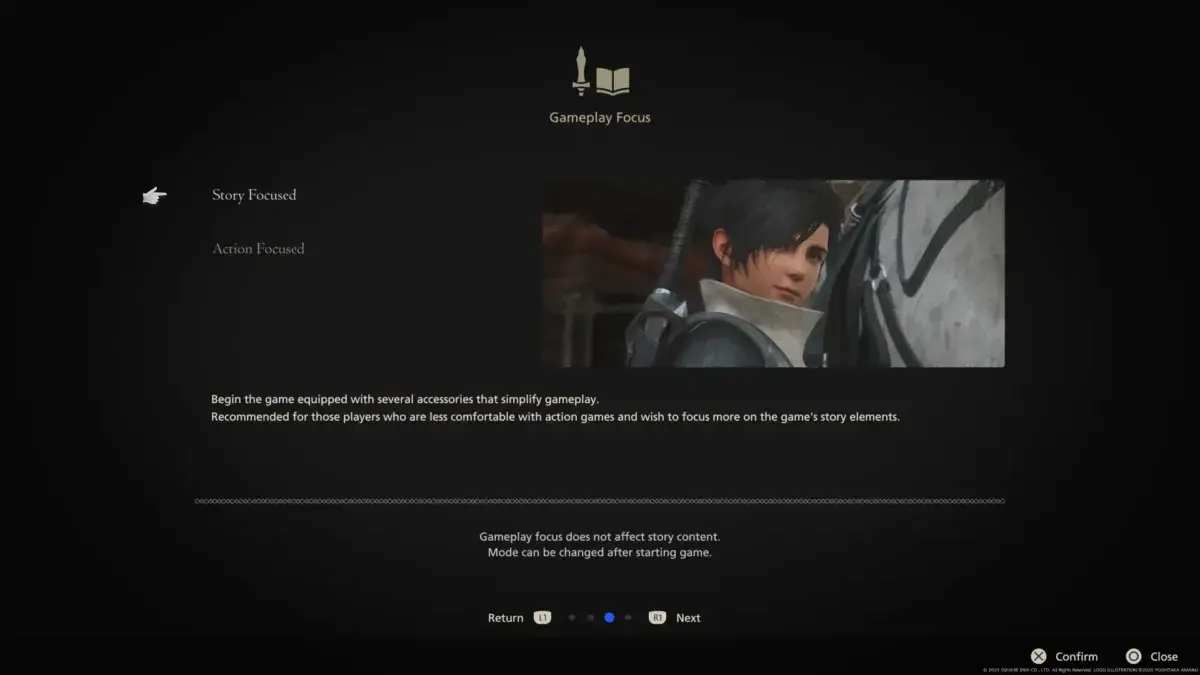
Credit: Square Enix.
For players used to Final Fantasy’s traditional turn-based combat (or at least with gauges like Active Time Battle), jumping into an action-oriented experience can be tricky, so the game has an accessory system that lets you equip items designed to make the combat simpler. (You can find our full Final Fantasy XVI combat guide here.)
Ring of Timely Focus slows time just before an enemy strikes, so instead of having to time your dodges you get something akin to a QTE prompt. Or you can opt for Ring of Timely Evasion, which automatically dodges any evadable attack for you. Ring of Timely Strikes simplifies combat so that, by pressing Square, you’ll automatically string together complex combos and Eikon abilities. Ring of Timely Healing will also automatically use a potion when your health falls below a certain point, provided you have potions in your inventory.
When you start a new game, you’ll be given a choice of ‘Story Focused’ or ‘Action Focused’. The former will automatically equip the above accessories as you begin your campaign, though you can always equip or unequip them yourself later on. Be aware that there are only three accessory slots, though, and if you do choose to use them for the above, you won’t have room to equip other accessories you find in the game, such as increasing your stats or improving damage or cooldown for Eikon abilities. Feel free to experiment – mix and match to find what suits you best.
2. Lost in lore
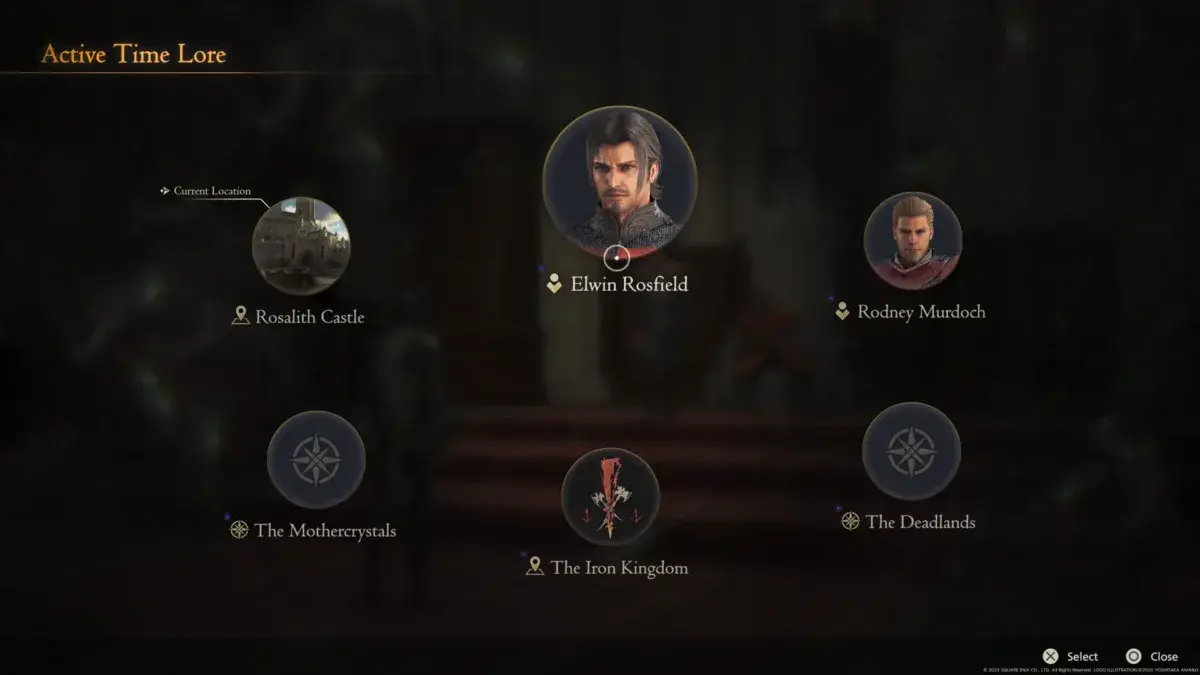
Credit: Square Enix.
Final Fantasy XVI’s story and world-buiding is vast and epic in scope, but fortunately it’s easy to keep track thanks to the Active Time Lore system. This brings up onscreen icons of characters, locations, concepts and more. These are constantly updated as you learn new information, such as character names or shifting allegiances.
During a cutscene, this can be accessed by pausing with the Menu button and then pressing the touchpad, or you can hold down the touchpad, which also works outside of cutscenes. It’s a handy way to keep up with the story if there’s something you need a refresh on, or if there was something you misheard.
If there’s other areas you need to catch up on that aren’t showing up in Active Time Lore, you can also visit an NPC called Harpocrates at the Hideaway who has a full encyclopedia called The Thousand Tomes. Go and chat to him to update the Tomes and you’ll level up, and maybe learn a bit more about Valisthea as a result.
3. Navigating Valisthea
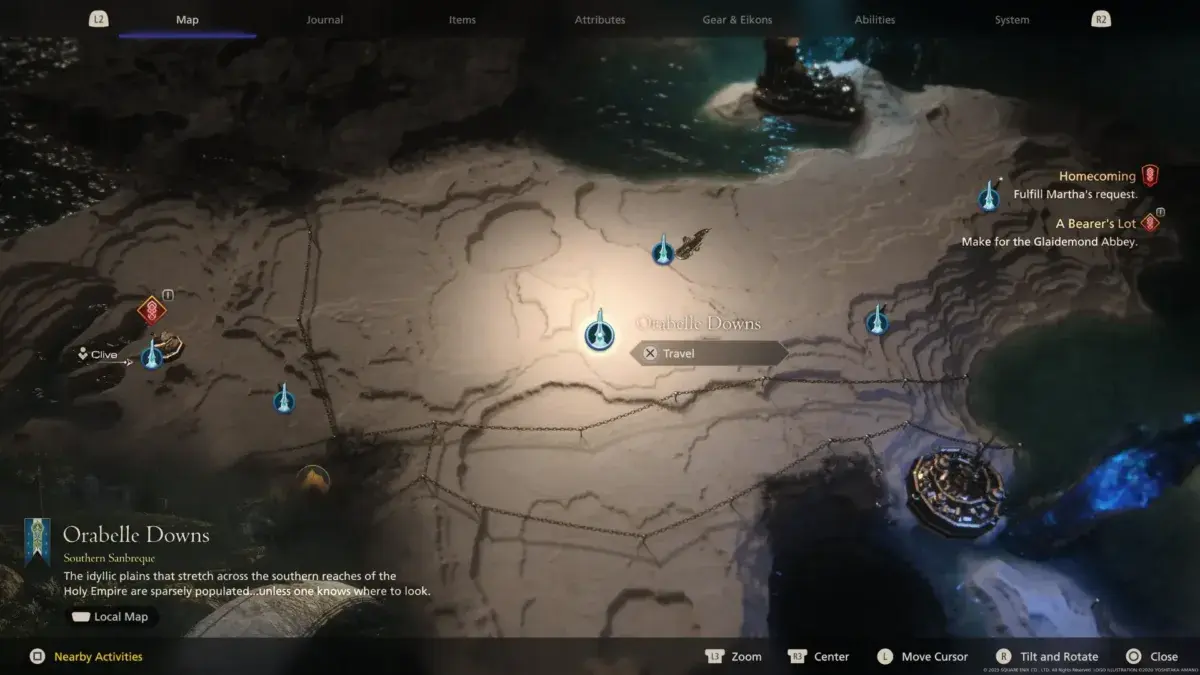
Credit: Square Enix.
There isn’t a traversable overworld map as such in Final Fantasy XVI. Instead, locations are split into linear action stages and larger open field areas, which besides offering a good degree of exploration also include smaller towns you can seamlessly traverse between. There’s also the Hideaway, which acts as your hub you return to in order to advance the story, take on side quests, stock up on inventory, or upgrade your gear.
You can travel between open field areas and the Hideaway once you’ve unlocked fast travel obelisks in each area (these appear as glowing blue pins on the map screen). You can find the map as the first tab on the left hand side of the menu screen. There’s also a local map that you can access when you’re in the Hideaway and an open field area by tapping the touchpad. From the local map you can also press the Menu button to instantly bring up the main map.
As these open field areas get pretty large, with multiple fast travel obelisks, you might not necessarily know which is the best one to fast-travel to, so fortunately you can also select an obelisk then tap the touchpad to bring up the local map. This will help you work out how close or far away it is from where you’re trying to reach next. The only places you can’t fast-travel to are the action stages, though there’s a way to revisit them – read on to find out how.
4. Party tricks
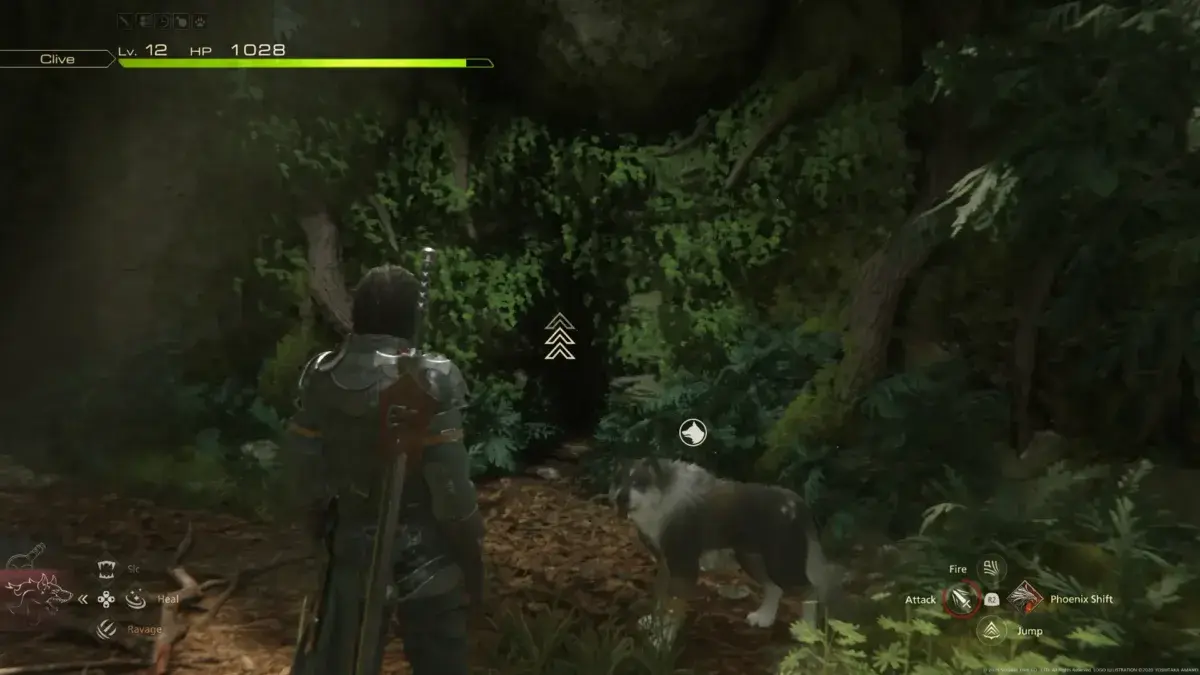
Credit: Square Enix.
Although Final Fantasy XVI is a single-player game where you only control the protagonist, Clive, you still have party members such as Cid or Jill. They will accompany you on your journey as and when the story dictates, and are controlled by AI, so there’s not much input you have with them. At best, you can leave them to do their thing and you’ll find that in combat they’ll competently dispatch enemies on one side while you focus on enemies on the other.
The one constant companion you do have, however, is your loyal wolf hound Torgal, who you do have the ability to command. Tap the left D-pad to toggle from inventory shortcuts and you can have him attack enemies (by pressing up), heal you (press right) or ravage enemies (press down). The latter can also launch minor enemies into the air. Combat aside, Torgal also comes in handy for directing you on where to go next. This comes in particularly useful in action stages, which despite being linear, are easy to lose your bearings after a manic fight and without a mini-map.
5. Practice makes perfect
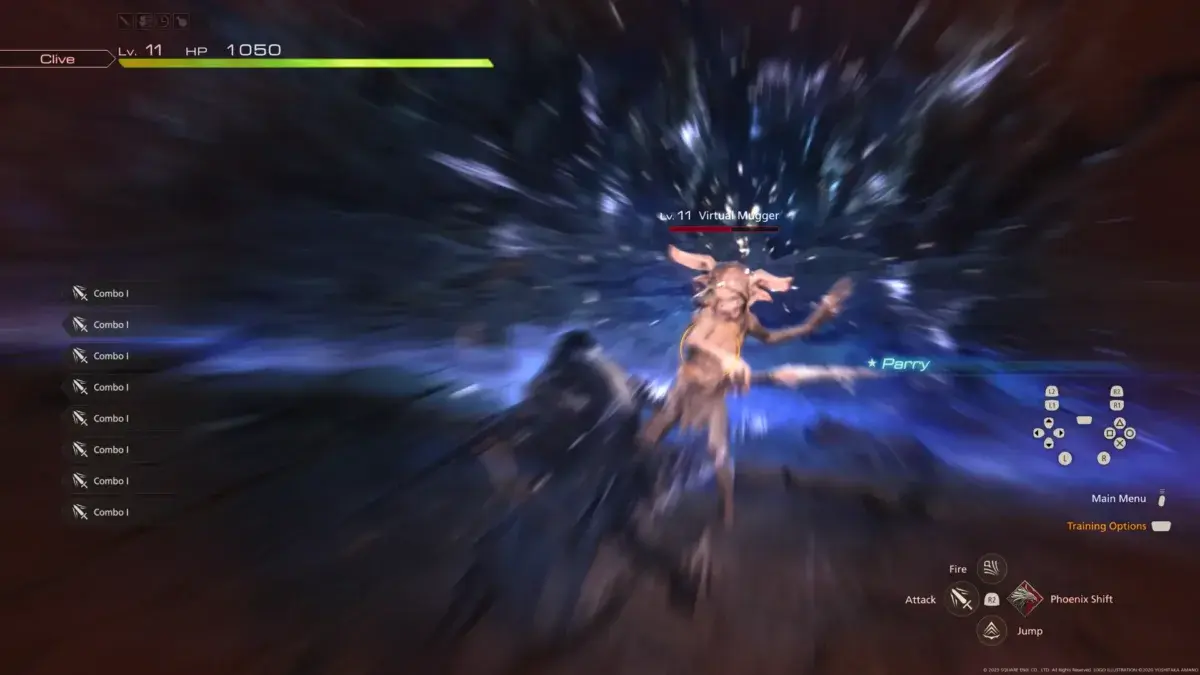
Credit: Square Enix.
For those looking to master combat, why not look at our combat tips guide? The best way to learn, though, is to simply practice, and fortunately there’s a safe space for this. You’ll find an object called an Arete Stone at the Hideaway, which will bring up a new menu. The first of these is the Hall of Virtue, which is basically a training mode, allowing you to practice combat against different enemy types, while toggling a number of settings like displaying input and action logs, enemy aggro and invincibility. It’s a great way to practice timing your dodges, parries and other mechanics, while more enemy types are added as you encounter them in the game.
The Arete Stone is also where you’re able to replay past action stages. There’s two options for this: Stage Replay, which is self-explanatory, but you’ll be able to play at your current level and abilities. It’s a useful way to grind for XP or materials. Arcade Mode, meanwhile, lets you play the game a little like Devil May Cry, so you’re awarded a score based on your performance. You’ll also be restricted when it comes to level, gear or consumables, though you’ll have free rein over what Eikons you have equipped.
You might even come across other Arete Stones in Valisthea which don’t appear to be active. What do they do? You’ll have to find out for yourself!
6. No hoarding allowed
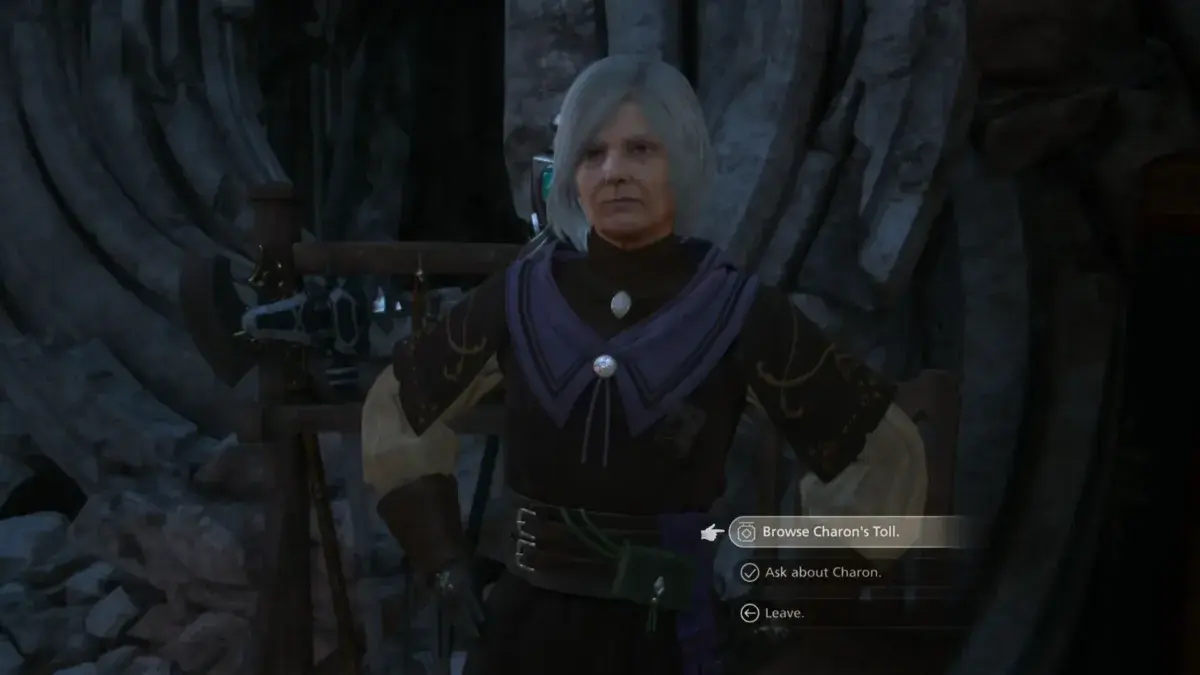
Credit: Square Enix.
RPGs have a knack for turning players into hoarders so that you save all your precious items – but never use them. Final Fantasy XVI dispenses with this somewhat as you can only carry a limited number of consumables in your inventory. To begin with, you can carry a maximum of four potions, three high potions, two stoneskin tonics and two strength tonics, although it’s possible to increase the number further into the game.
You can buy consumables from Charon at the Hideaway or any other merchant in a town or village. In action stages you’ll also find them as glowing objects you can pick up (fortunately, all glowing items or materials are automatically added to your inventory when you approach them) as well as drops from defeated enemies. If you pick up a potion when your inventory has reached its maximum, you’ll automatically consume the excess potion, which you’ll also find is a good way to ensure your health is always topped up after a tough fight anyway.
7. In it for the Gil
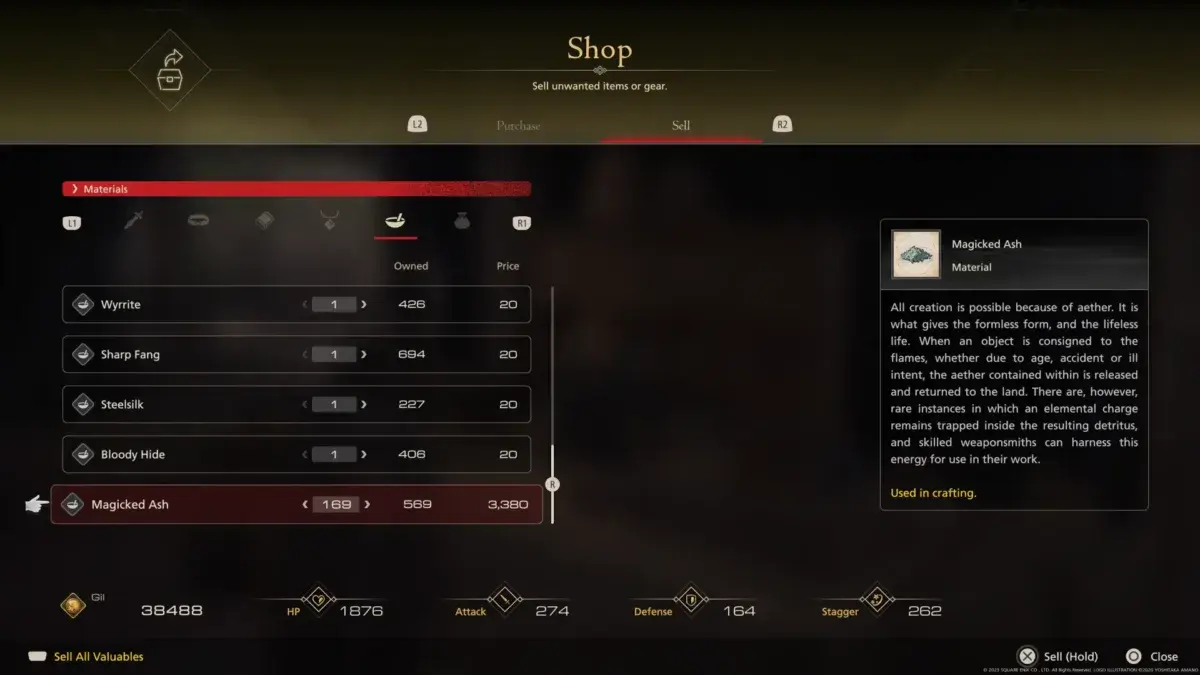
Credit: Square Enix.
You may sometimes find you need Gil in order to buy gear or perhaps a new song for the Orchestrion at the Hideaway (for whatever reason, Orchestrion Rolls cost in the tens of thousands).
Gil can be earned by completing quests, opening chests and defeating enemies, but you can also sell items in exchange for currency. When you upgrade to new gear, the old gear is obsolete, so don’t feel bad about selling those off. Certain materials will also have no purpose except for being sold for Gil, which will be highlighted below an item description, such as Gil Bug or Black Blood. If you’re fighting tons of enemies out in the open field, you’ll also accumulate hundreds of materials. These are only worth 20 Gil each, but if you have a large surplus, it doesn’t hurt to sell a large bundle of them. Be warned, however, that crafting gear also uses a large quantity of materials, so you may prefer to keep a surplus just in case.
8. On the side
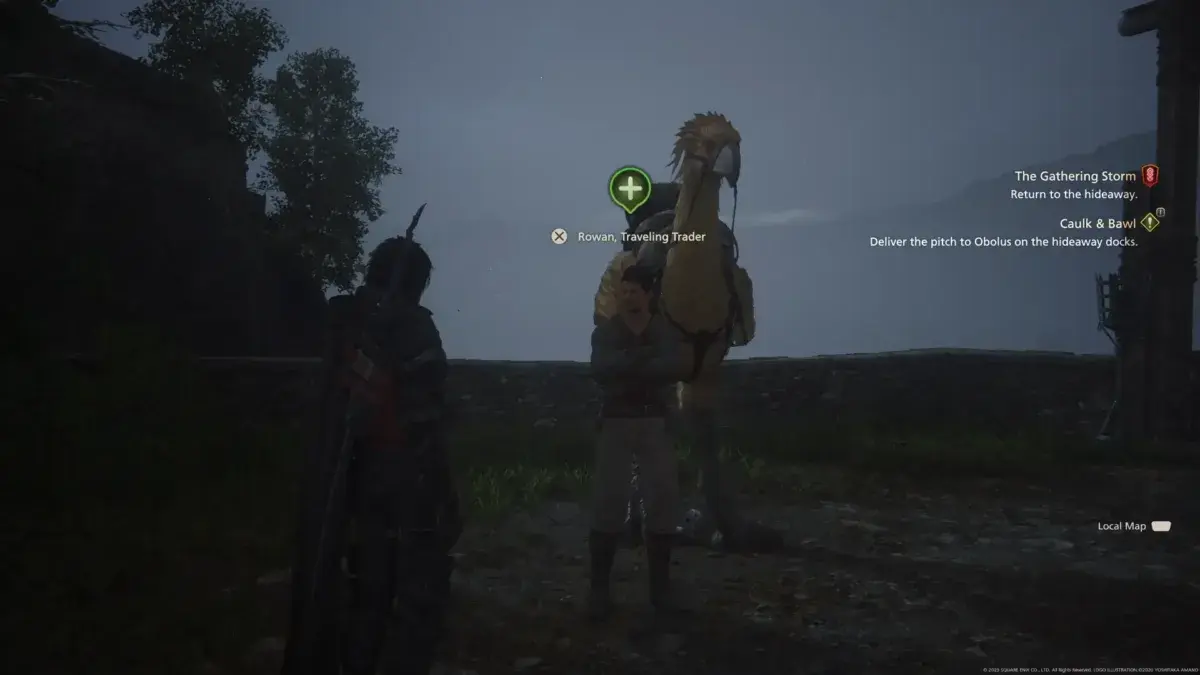
Credit: Square Enix.
Besides the main story, there’s plenty of side quests to take on, which we’d advise you not to ignore – especially as they’re a great way to gain XP, ability points, earn other rewards, as well as add more depth to the world-building. Later on, completing side quests also increases your reputation, which unlocks additional rewards back at the Hideaway.
Side quests will pop up as the story progresses, and you’ll often have to speak to an NPC quest giver who has a green icon with an exclamation mark over their head. When you accept a side quest, you can also hold down Triangle to prioritise that quest. Any current quest will continue to be displayed on the right hand side of the screen.
If you’re conscious of time and looking to prioritise side quests, then look out for any side quest that has a green plus sign instead of a green exclamation mark. These indicate that the reward will unlock a new feature or upgrade that you’ll find useful on your journey, though you won’t encounter these until you’re about 12-15 hours into the game.
9. Be kind, respec
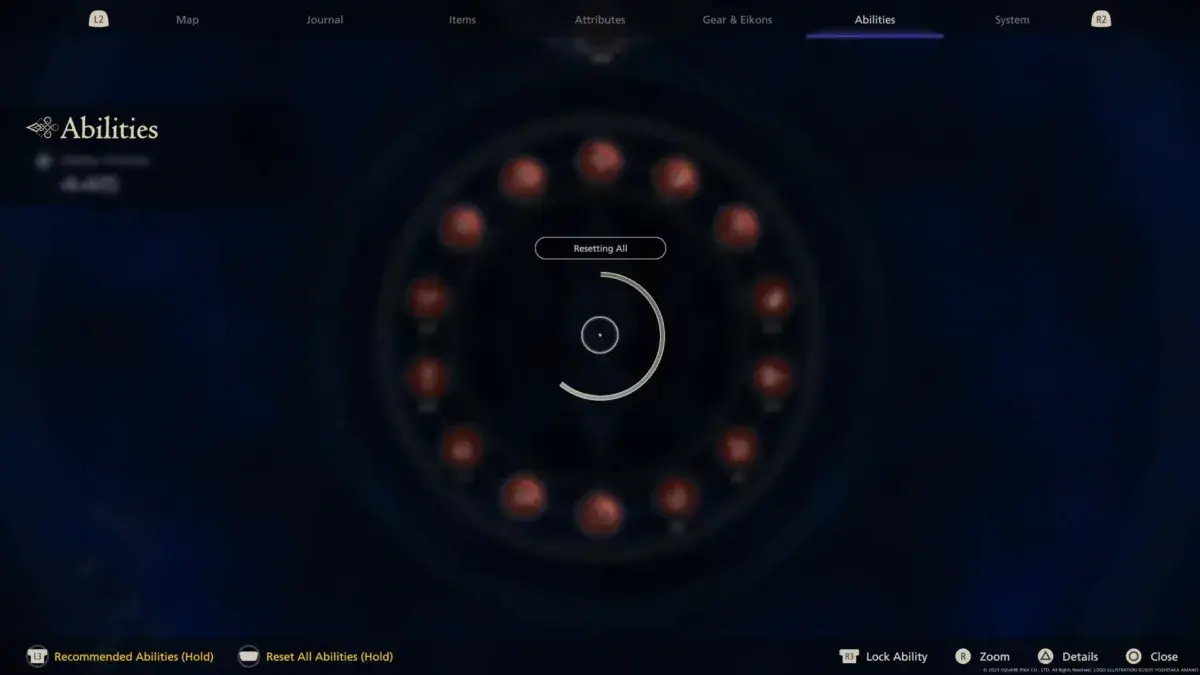
Credit: Square Enix.
Besides levelling up XP, you’ll also earn ability points, which are necessary to upgrade Clive’s Eikon abilities. While you can get some more insight into these abilities in our combat guide, the important thing to note is that you can respec at any time at no further cost.
In the Abilities menu, you can already take your time considering which abilities to unlock or upgrade as you have to hold and charge before it’s unlocked – meaning you can always cancel a selection midway. You can also select any ability and then hold Square to reset it. If you want to reset all your abilities, you hold down the touchpad, which brings up another prompt screen to confirm how many ability points will be refunded. While this theoretically also means respeccing from scratch, you can also select your favourite abilities and lock them with R3 so you won’t have to unlock and upgrade these all over again.
10. Chocobos and Moogles
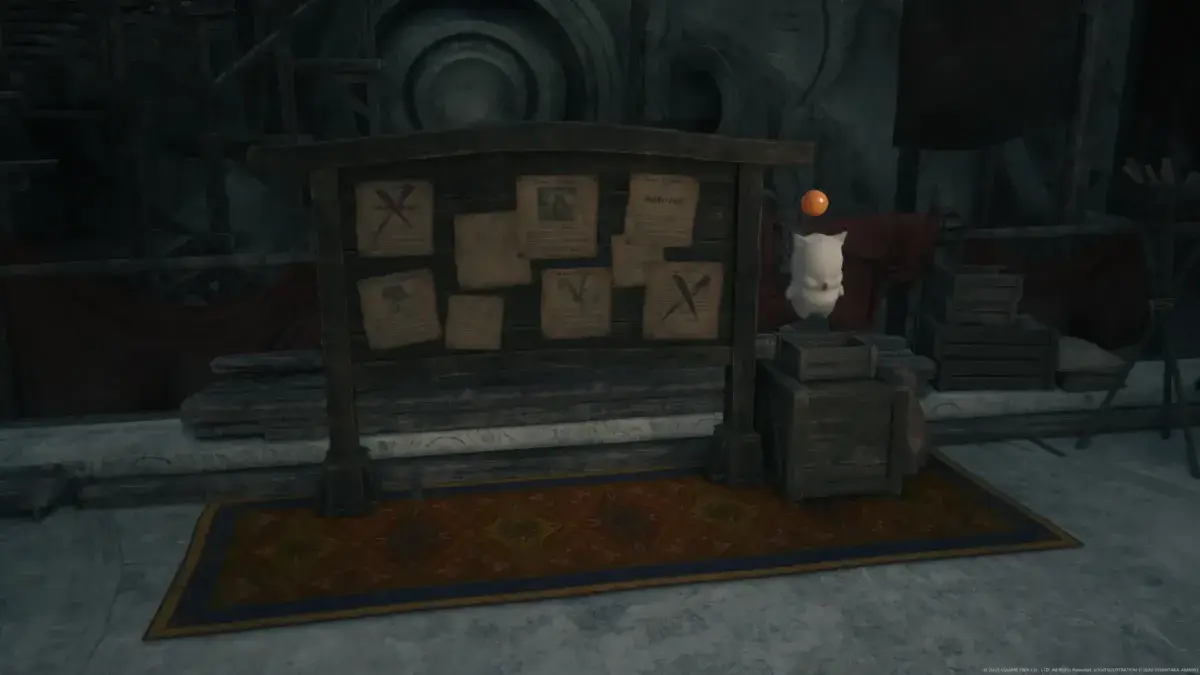
Credit: Square Enix.
In case fans were worried that Final Fantasy XVI’s grittier, Game of Throne-style tone and real-time combat feels like too much of a departure, there are at least two constants that make it into the latest game: chocobos and moogles.
Clive has a chocobo called Ambrosia who you’ll see early on, but isn’t available as a mount until further into the game. We don’t want to spoil too much, here but to unlock her you’ll want to look out for a side quest called The White-Winged Wonder (it’s one of those side quests with a plus sign). Once unlocked, you’ll be able to summon her as a mount at almost any time.
You’ll also encounter a moogle named Nektar at the Hideaway, though it seems only Clive can see or understand them. While their purpose is unclear at first, you’ll want to speak to Nektar further into the game, as they look after one of the best side activities. That’s right, the hunts from Final Fantasy XII return!
Read more: Final Fantasy XVI complete combat guide


